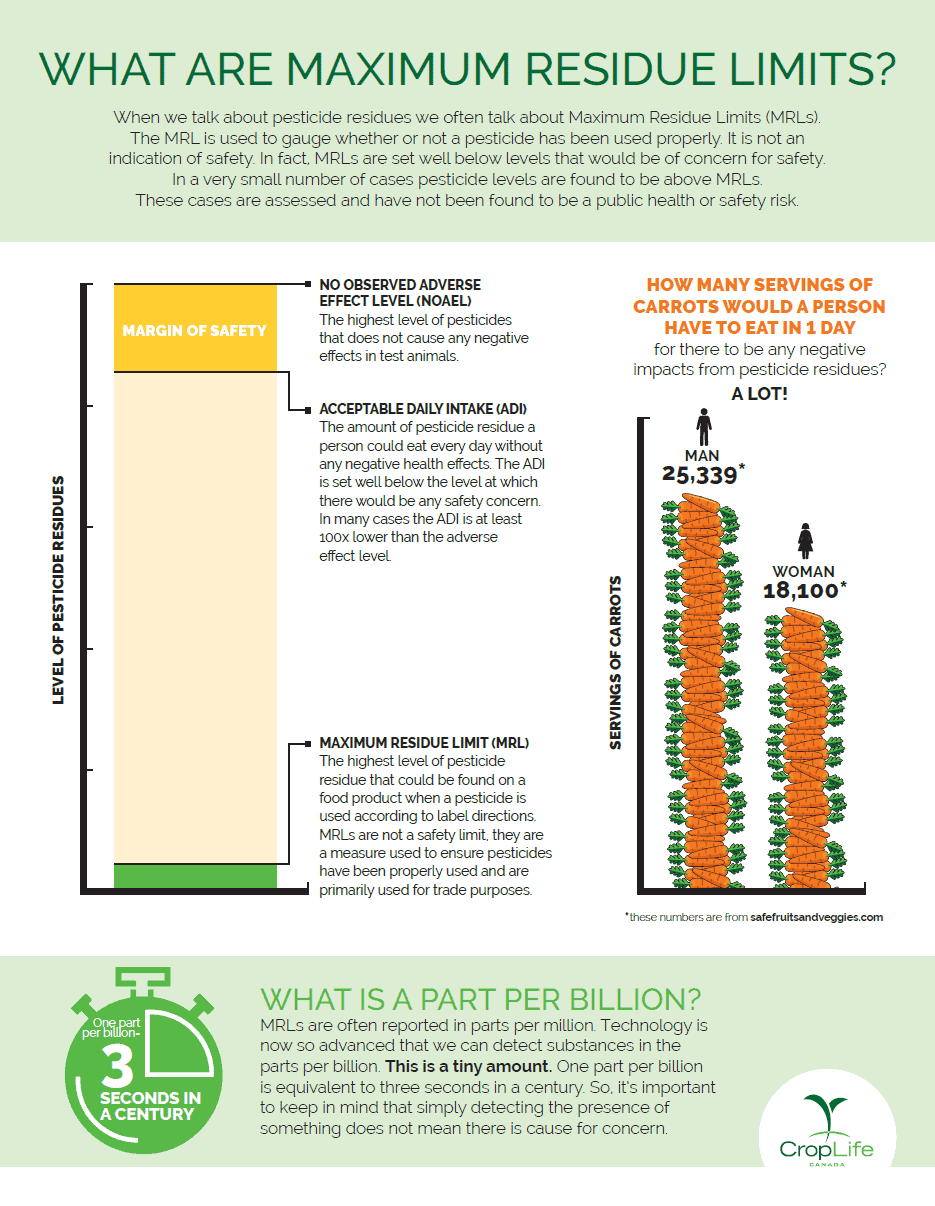Regulations
 How are pesticides regulated in Canada?
How are pesticides regulated in Canada?
Canada has a strict regulatory system to ensure food safety and environmental protection. All pesticides, whether organic or synthetic, are regulated by Health Canada.
The Pest Management Regulatory Agency (PMRA) of Health Canada regulates every pesticide in Canada, whether they are used on-farm, in a forest, or residentially.
Expert scientists
Health Canada’s top priority is protecting the health and safety of Canadians and it will not approve any product that may pose a risk to human health. More than 300 Health Canada scientists review new pesticide applications and re-evaluate existing products. As internationally renowned experts in their fields, these scientists collaborate with global experts to ensure product safety.
Thorough testing
The PMRA employs some of the most rigorous evaluation processes in the world, including more than 200 separate studies for health and environmental impacts before approving any products for sale and use in Canada.
Read more about the product approval process in From Lab to Label.
Health Canada re-evaluates registered pesticides every 15 years, or whenever new and relevant scientific information merits review.
Maximum residue limits
Maximum Residue Limits (MRLs) are the maximum amount of pesticide residue that are allowed to remain on a crop when the product is used according to label directions. In Canada, MRLs are set by Health Canada and ensure pesticides are being used as intended.
Detection technology has become so advanced that we can now detect residue in parts per billion. Detecting a pesticide residue on a food item does not necessarily warrant concern. Regulatory agencies like Health Canada take into account the potential exposure a person could have to a pesticide to accurately assess risk. MRLs are generally set at least 100 times below safety thresholds.
Farmers must follow the label directions when it comes to the use of all pesticides to ensure the high standards for MRLs are being met.
Over time, MRLs may change for a number of reasons, including updates to a how a pesticide is used or to align with international standards. Misaligned MRLs between trading partners can result in market instability and food waste due to massive delays or even entire shipments being turned away for what amounts to an administrative technicality.
When we talk about MRLs we are talking about infinitesimally small amounts of residues that do not impact human health and safety.

The (not so) dirty dozen
Every year the Environmental Working Group (EWG) – an American environmental activist organization – releases a report called the "dirty dozen" which suggests avoiding certain fruits and vegetables due to pesticide residues. This list is unfortunately full of alarmist misinformation that may cause people to be fearful of conventionally grown produce and avoid eating fruits and vegetables. The “dirty dozen” misleads consumers into being fearful of conventionally grown food. Both organic and conventional farmers use pesticides to control pests. All pesticides, whether used for organic or conventional production, must be approved by Health Canada for safety before they can be used. Health Canada clearly states that there is no health risk from eating conventionally grown foods because of pesticide residues. watch the video.